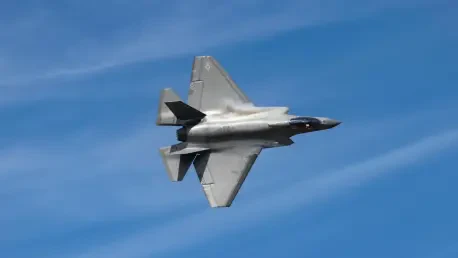In an era where artificial intelligence is reshaping the landscape of defense technologies, Lockheed Martin has introduced a significant new initiative called the AI Fight Club. This program is set to revolutionize how AI systems are tested and deployed in various military domains, ensuring that the most advanced and reliable systems are put to work in supporting national security. We have Kwame Zaire with us today, a manufacturing expert with a keen interest in electronics and equipment, who can provide some valuable insights into this groundbreaking initiative.
Can you explain the concept behind Lockheed Martin’s AI Fight Club?
AI Fight Club is essentially a competitive testing environment crafted by Lockheed Martin to not only evaluate but also accelerate the deployment of AI technologies in military operations. The idea is to simulate realistic scenarios across air, land, sea, and space to test how AI systems perform under conditions similar to those they might face in actual missions.
What is the goal of this AI Fight Club initiative?
The main objective is to determine the most robust, reliable, and effective AI models by pitting them against each other in complex scenarios. It’s about identifying the top-performing technologies that can help maintain the United States’ strategic edge over potential threats, ensuring our defense systems remain at the forefront globally.
How does AI Fight Club simulate realistic scenarios for testing AI systems?
Lockheed Martin has developed a synthetic environment capable of replicating scenarios that mirror real-world military challenges. This encompasses scenarios like airborne operations in hostile territories and coastal defense strategies. The environment is sophisticated enough to mimic intricate military operations, providing an authentic testing ground for AI technologies.
What types of operations are included in the AI Fight Club scenarios?
The scenarios range widely, covering everything from airborne operations in contested environments to coastal defense and space-based reconnaissance. This breadth ensures that AI systems are thoroughly tested across various types of military operations, reflecting the multifaceted nature of modern warfare.
How will teams be selected to participate in the AI Fight Club competition?
Teams from across the industry will be brought together, with selection presumably based on their expertise and the potential of their AI models. It’s a chance for both seasoned and emerging players in the defense sector to showcase their capabilities on a significant platform.
How do these scenarios help in evaluating AI models’ performance?
These scenarios provide structured, realistic challenges that mirror the complexities and unpredictability of actual combat situations. By testing AI models under such conditions, the program can effectively measure reliability, adaptability, and overall performance, ensuring only the best systems are advanced.
Why is this initiative especially important at this time, according to Lockheed Martin?
Today, technological advancements are exponential, and potential threats evolve at an unprecedented pace. According to Lockheed Martin, there is an urgent need to definitively identify which AI implementations best serve national and allied security interests. The AI Fight Club provides a timely means to achieve this goal.
Could you elaborate on what DOD standards the AI models need to meet?
The AI models must satisfy stringent Department of Defense criteria concerning security, compliance, and operational effectiveness. These standards ensure the AI systems are not only theoretically capable but also practically deployable within national security frameworks.
What role do government representatives play during these competitions?
Government representatives play a critical role by engaging with the competitors, observing demonstrations, and presumably offering insights and guidelines to ensure alignment with national defense strategies. Their involvement also facilitates the integration of advancements into broader defense infrastructure.
How does AI Fight Club contribute to national security?
By optimizing the evaluation and improvement of AI systems for defense purposes, AI Fight Club helps ensure that the military is equipped with the most effective tools. This strengthening of AI capabilities enhances response strategies against contemporary and future threats.
How will insights from the competition influence future AI systems?
Insights gleaned from AI Fight Club can direct the development of future AI systems by highlighting strengths, weaknesses, and areas requiring innovation. This feedback loop ensures continuous improvement, pushing the defense industry toward more effective AI deployments.
How does the competition ensure it covers vulnerabilities and fosters innovation?
Through head-to-head matchups in realistic scenarios, the competition naturally exposes potential vulnerabilities of AI systems. Simultaneously, by bringing together diverse teams, it fosters a collaborative innovation environment where new solutions can be developed directly in response to observed challenges.
What opportunities do teams have to present and publish their AI research and results?
Participants have the chance to present and publish their findings, which not only showcases their innovations but also contributes widely to the body of knowledge in the AI defense community. This transparency encourages shared learning and continuous advancement in the field.
What is the timeline for developing the virtual arena for the competition?
Lockheed Martin plans to complete the virtual arena by the end of the third quarter of 2025, with the aim of having the first competition subsequently in the fourth quarter.
When is the first AI Fight Club competition expected to take place?
The inaugural competition is slated for the fourth quarter of 2025, marking a major milestone for Lockheed Martin as they bring the AI Fight Club to fruition.
How will this initiative push the industry forward?
By establishing a rigorous standard for AI system testing and validation, the AI Fight Club will raise the bar for technological advancement. It incentivizes innovation and excellence, propelling the entire industry toward more advanced capabilities.
What makes this testing environment comprehensive across different domains?
Its design includes diverse environments and operations, covering air, sea, land, and space. This all-encompassing approach ensures AI systems are evaluated for versatility and capability across any potential military application.
How do you ensure the simulations meet Department of Defense qualifications?
The simulations adhere strictly to DOD standards, which are stringently detailed to ensure they reflect operational demands and security requirements, validating that participating AI systems are fit for defense applications.
Can you give examples of how insights can specifically benefit warfighters?
Insights can lead to the introduction of AI models that enhance decision-making speed and accuracy on the battlefield, thereby directly impacting the efficiency and success of military operations, ultimately improving safety for warfighters.
How does the competition encourage collaboration among participants?
By bringing together teams from various companies and sectors, the AI Fight Club fosters a spirit of collaboration, where collective problem-solving and knowledge-sharing enhance the overall quality and innovation of AI technologies.
What is your forecast for the impact of the AI Fight Club on the industry?
I foresee this initiative significantly accelerating the development of AI systems capable of meeting defense needs by identifying top-tier technologies through robust competition. It will likely serve as a catalyst for the industry’s overall progress, particularly in the seamless integration of AI in defense operations.









